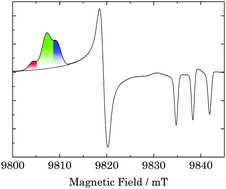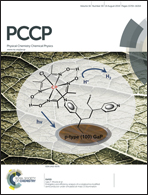Hydrogen bonding of nitroxide spin labels in membrane proteins
Abstract
On the basis of experiments at 275 GHz, we reconsider the dependence of the continuous-wave EPR spectra of nitroxide spin-labeled protein sites in sensory- and bacteriorhodopsin on the micro-environment. The high magnetic field provides the resolution necessary to disentangle the effects of hydrogen bonding and polarity. In the gxx region of the 275 GHz EPR spectrum, bands are resolved that derive from spin-label populations carrying no, one or two hydrogen bonds. The gxx value of each population varies hardly from site to site, significantly less than deduced previously from studies at lower microwave frequencies. The fractions of the populations vary strongly, which provides a consistent description of the variation of the average gxx and the average nitrogen-hyperfine interaction Azz from site to site. These variations reflect the difference in the proticity of the micro-environment, and differences in polarity contribute marginally. Concomitant W-band ELDOR-detected NMR experiments on the corresponding nitroxide in perdeuterated water resolve population-specific nitrogen-hyperfine bands, which underlies the interpretation for the proteins.


 Please wait while we load your content...
Please wait while we load your content...